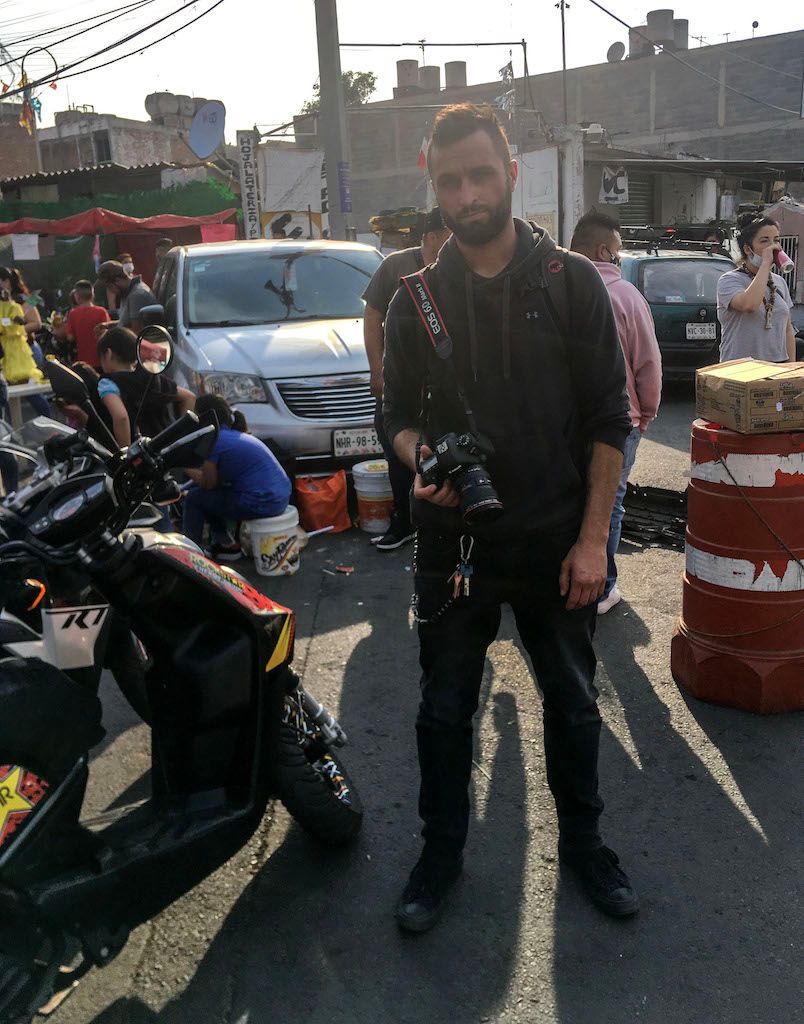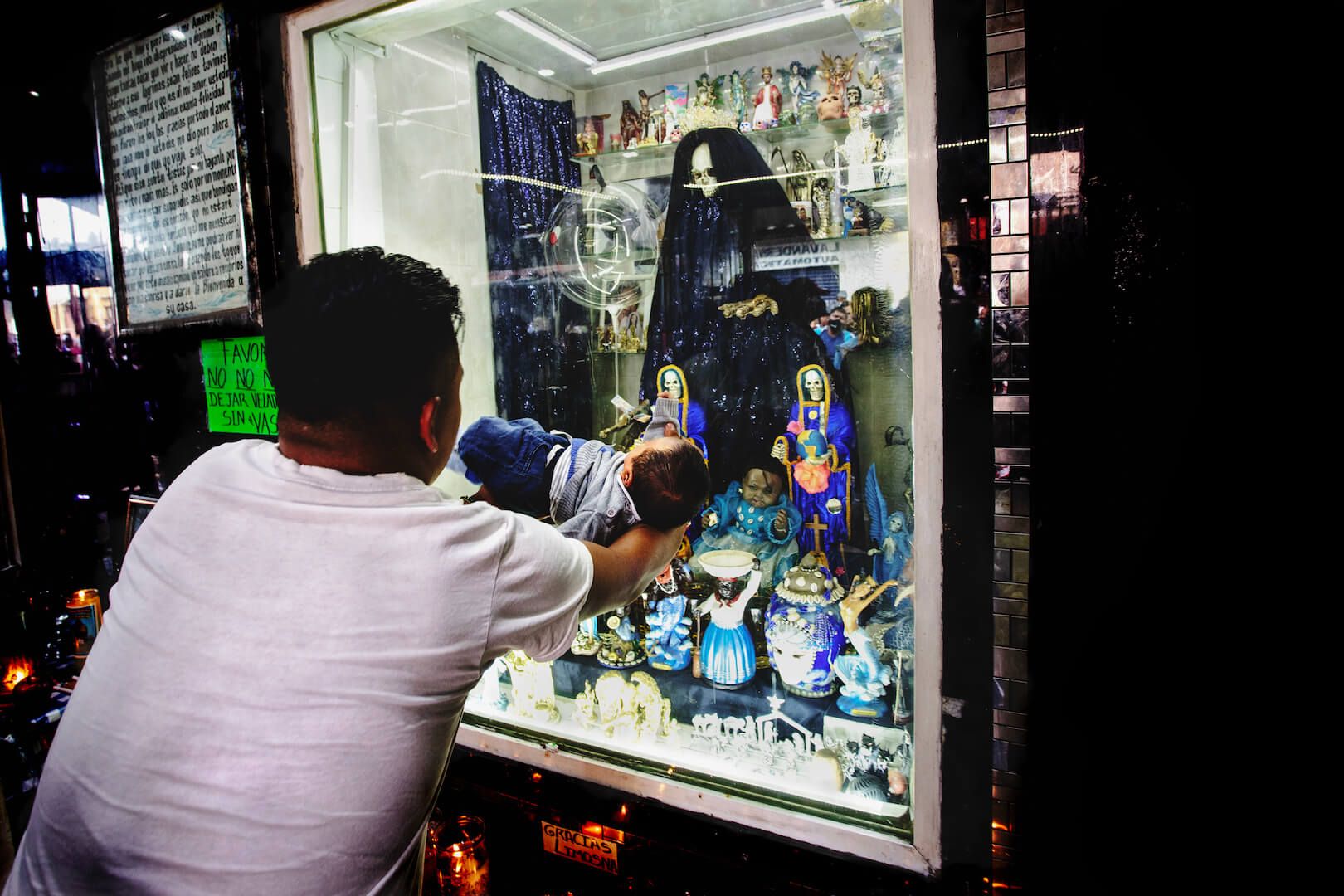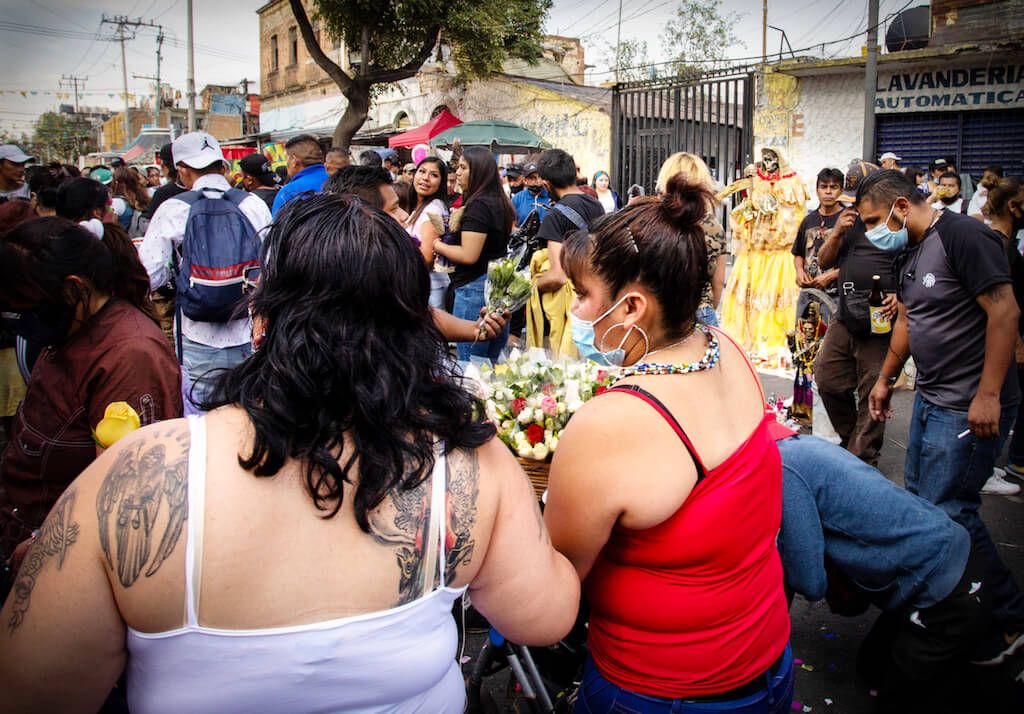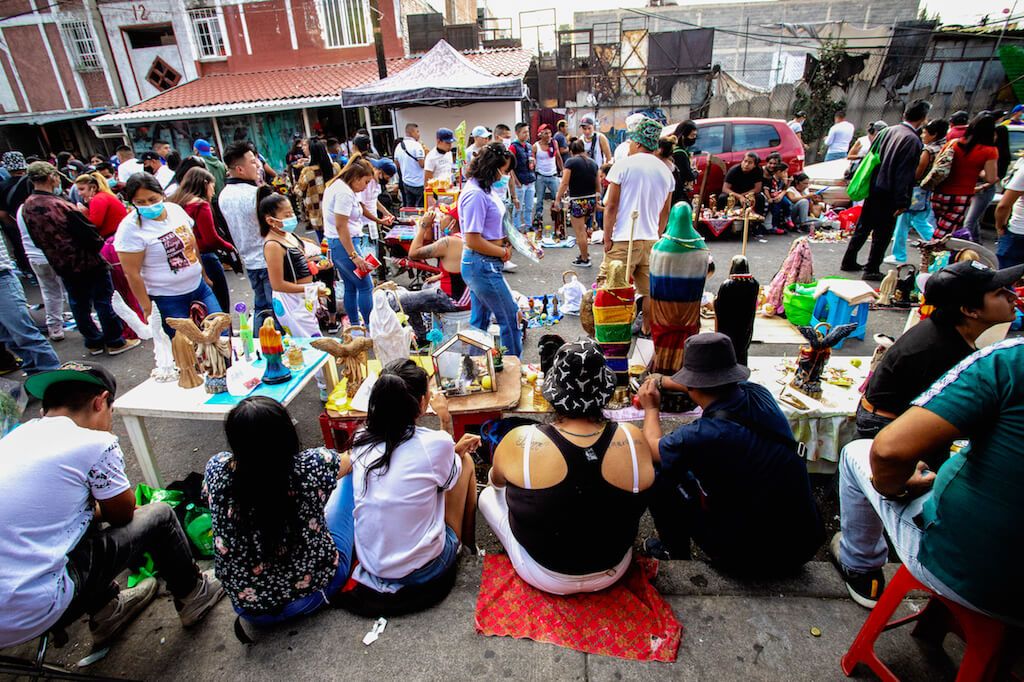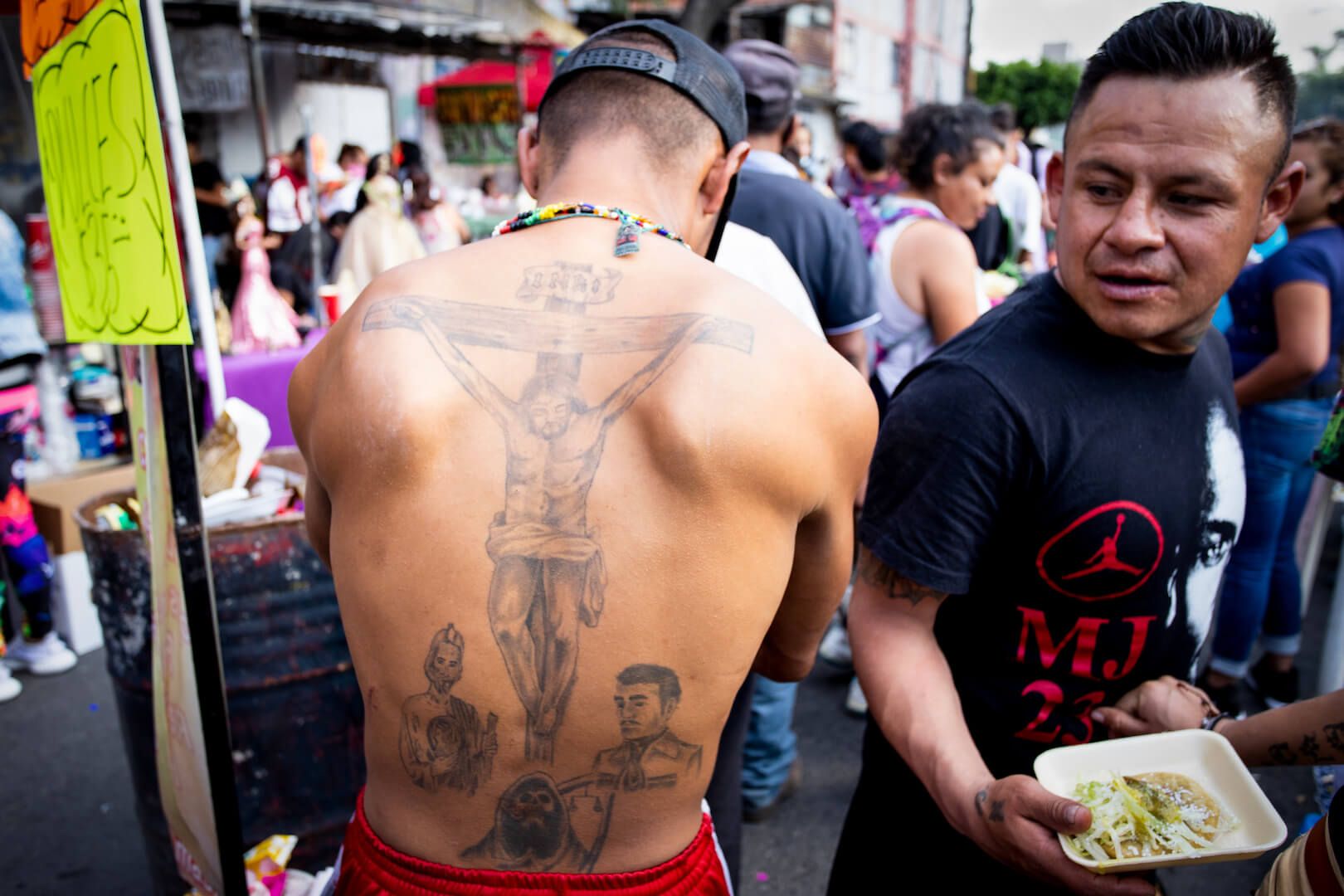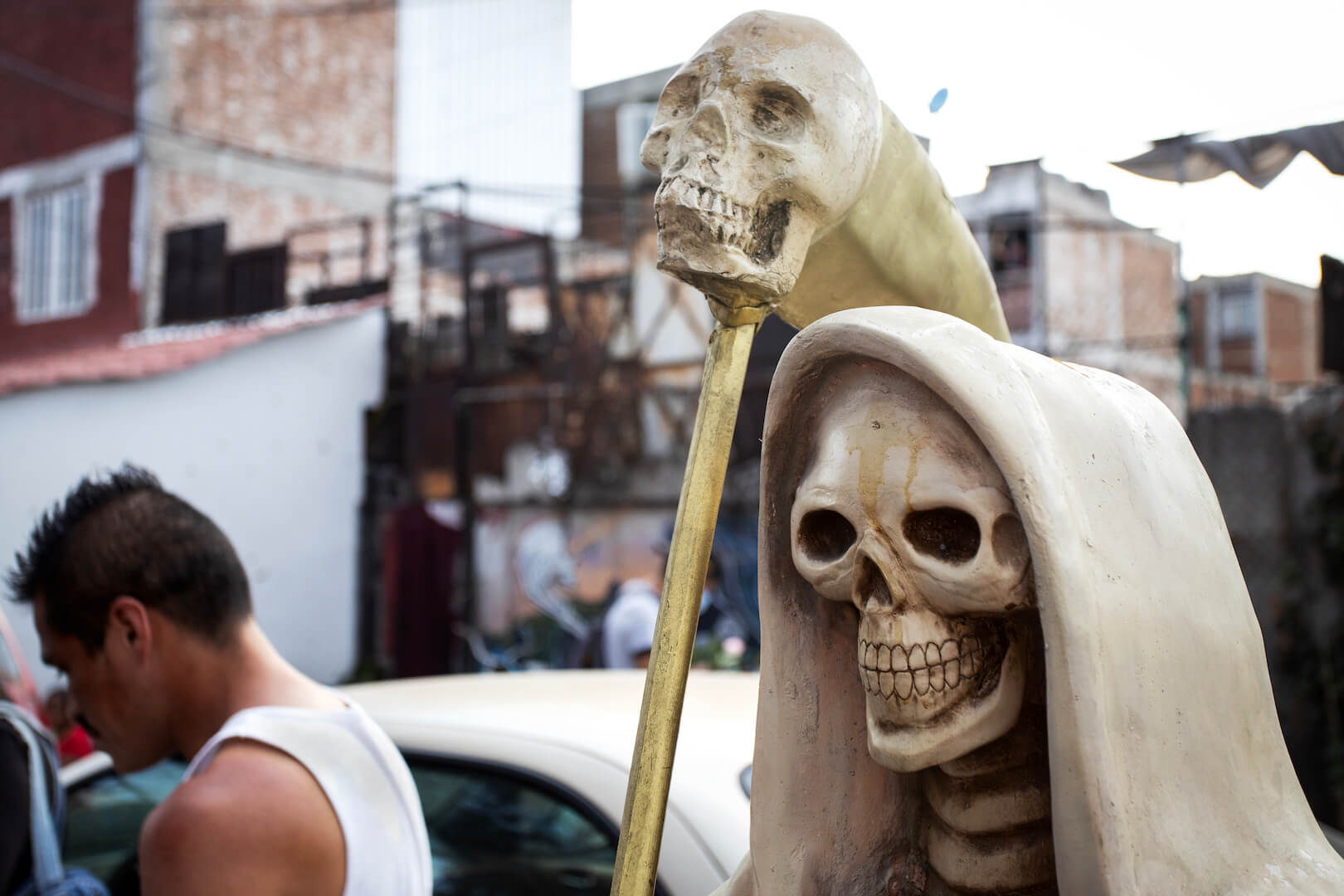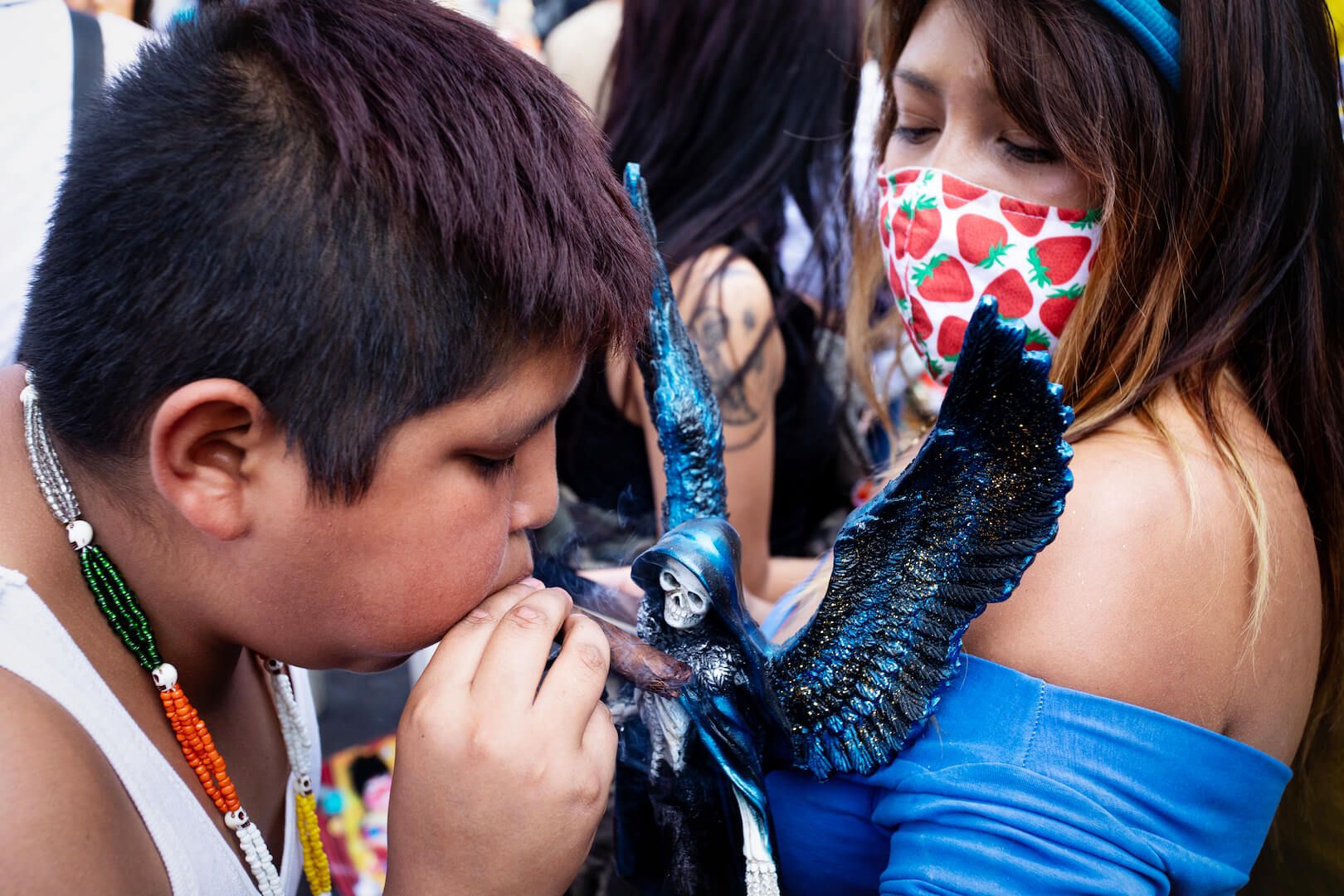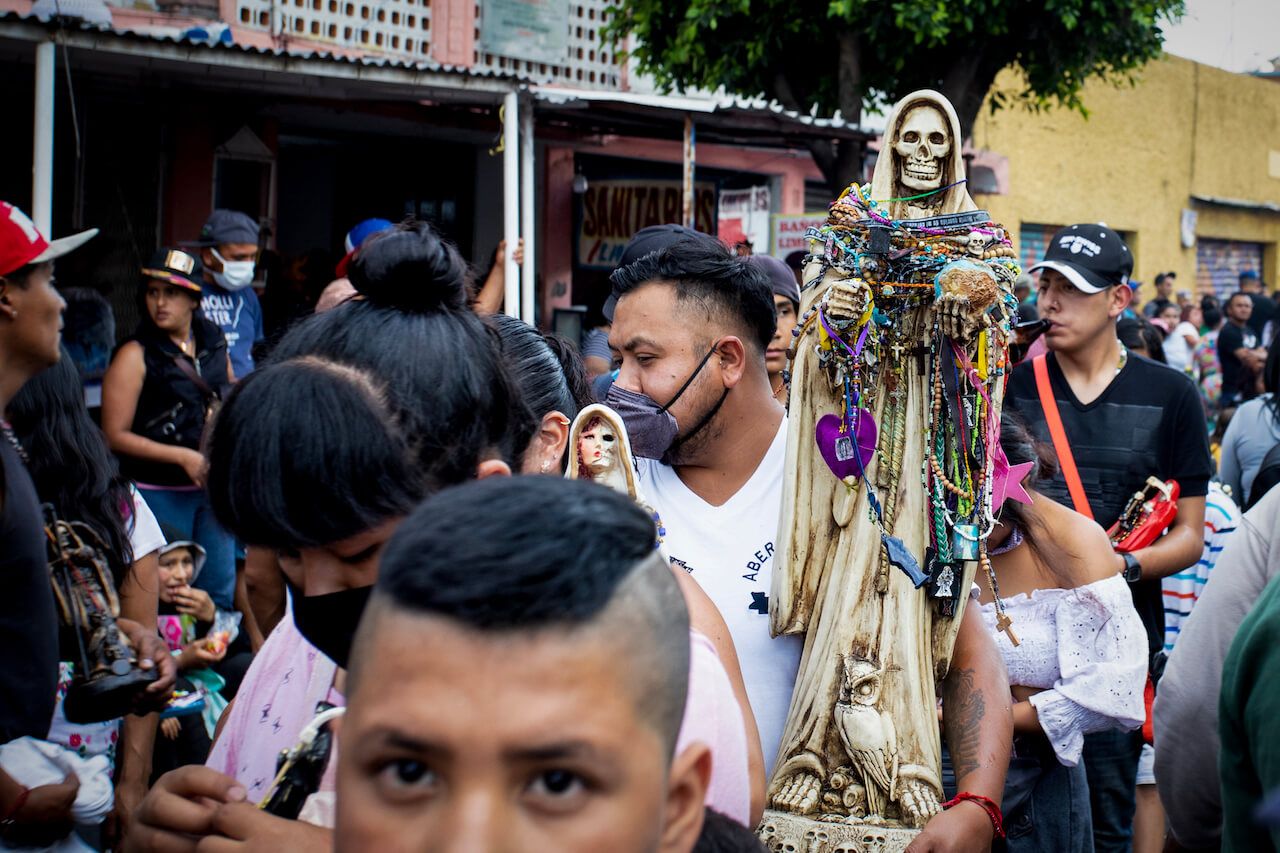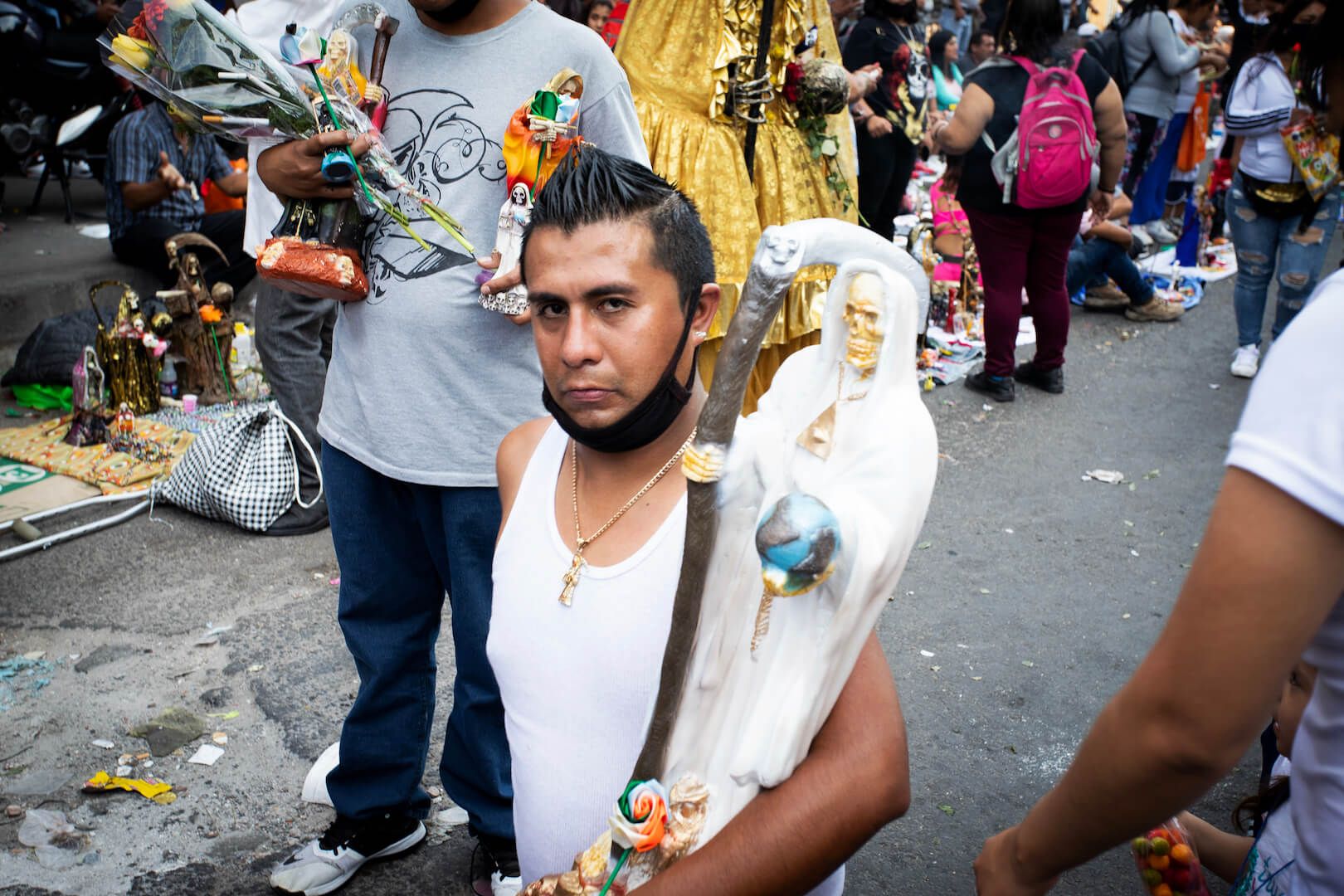Visit of the Saint Death: In the lair of Mexican Narcos

We entered through an ordinary metal gate into the imaginary hallway of the safe house, and I placed my life on an imaginary hook on a key ring made of hair. When I leave, I'll pick it up again, but in the meantime, it won't be in my control.
A parallel life, not unlike the one outside, yet different, pulsed in the square of this city hidden in another city. Boys were loitering, children playing among them, freshly washed clothes hanging on ropes above their heads. Only the queue forming in front of the tarpaulin-covered shelter didn't seem to belong there, and yet it was central to all this.
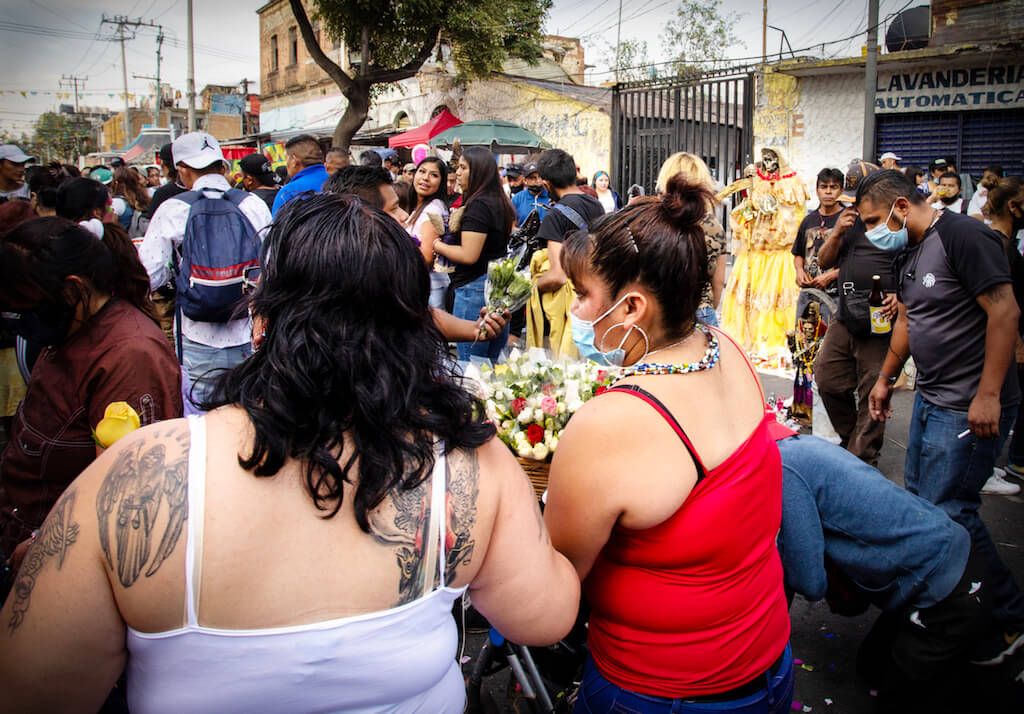
With each successive right hand I was handed, it became clear that the chances of backing out of this venture were diminishing. For a moment I wondered if I should get back. But who would want to be a bungee jumper who climbs back over the ledge at the last minute and unhooks himself from the straps with trembling hands? There was nothing to do but accept the challenge, keep free-falling, and wait for the rope to carry me, stop me when I was at the bottom, and throw me back into normal life up there.
We skipped that line for the shelter and did a deal with the guys who were laughing at us from behind giant bags of cocaine and marijuana, sniffing glue from a crumpled plastic bottle. That was the deal, to get us where we needed to go.
One more important fact played against the eventual NO: Once you peer into this half-world, the word NO loses its value, subject to loyalty inflation. Here, on the sovereign soil of the unwritten rulers of Ciudad de México, the rules of the world we are used to are not applying. As soon as the metal gate slams behind you, of which there are countless in this neighborhood among the thousands of stalls of the dreaded market, you cease to be masters of your destiny. You sign up for the devil, who greets you at the secret entrance with the clean-shaven face of a sympathetic young man with sharp features, a smoky joint behind his ear, and a bandaged wrist injured in a street fight. He flashes you a mischievous smile while announcing your arrival over the radio. You high-five him like an old pal, but even the oldest old pal doesn't have as much power over your next being and non-being as a bunch of anonymous teenagers here in the underworld do at that moment. What the demigods here say goes, and so your eventual NO casts you in the shadow of distrust, and makes you suspicious and weak - not unlike in the normal circles of the transparent world, where NO is even a sign of confidence and strength. Here you have to hand your NO at the door, or it will remain as a burning brand. Whereas a determined yes confirms that you are the right person in the right place, and is your ticket in and out at the same time.
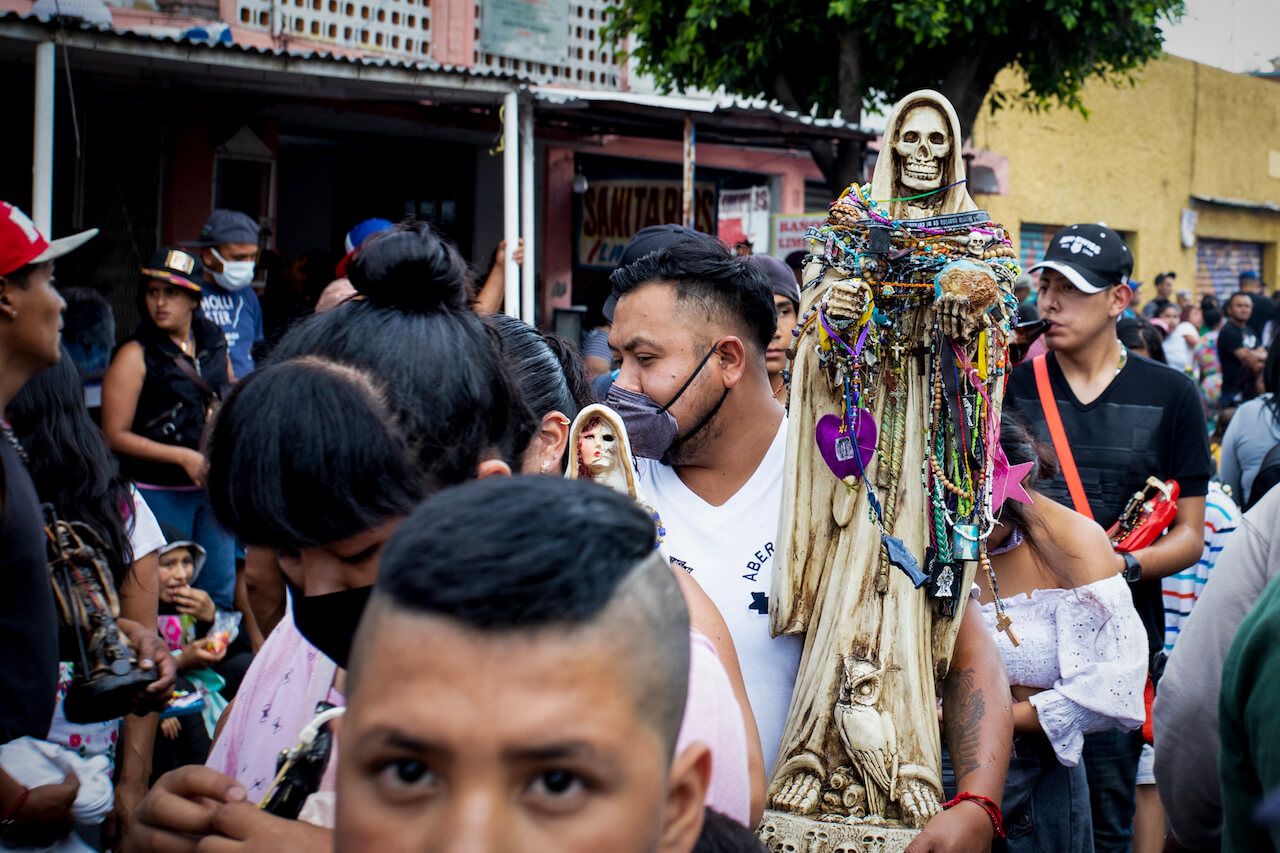
And so when E., standing in the square and chatting with his acquaintances, told me that I would be taken to the altar of Santa Muerte, the patron saint of narcotraffickers and damned of all kinds, whom I had come to report on, by the head of this plaza himself, I was unnerved and all the possible and impossible consequences of a single NO flashed through my mind.
In the end, however, no one seemed to ask me whether I wanted to or not. P. arrived without a word on his scooter, waved me to sit behind him, and I threw my feet on the passenger pedals, grabbed the handles behind the seat, and we were back among the stalls and the pedestrians, we zigzagged between them at full speed and I thought more than once that we had no chance of getting there at this killer pace, but if we did and I survived this day, it would be one to remember.
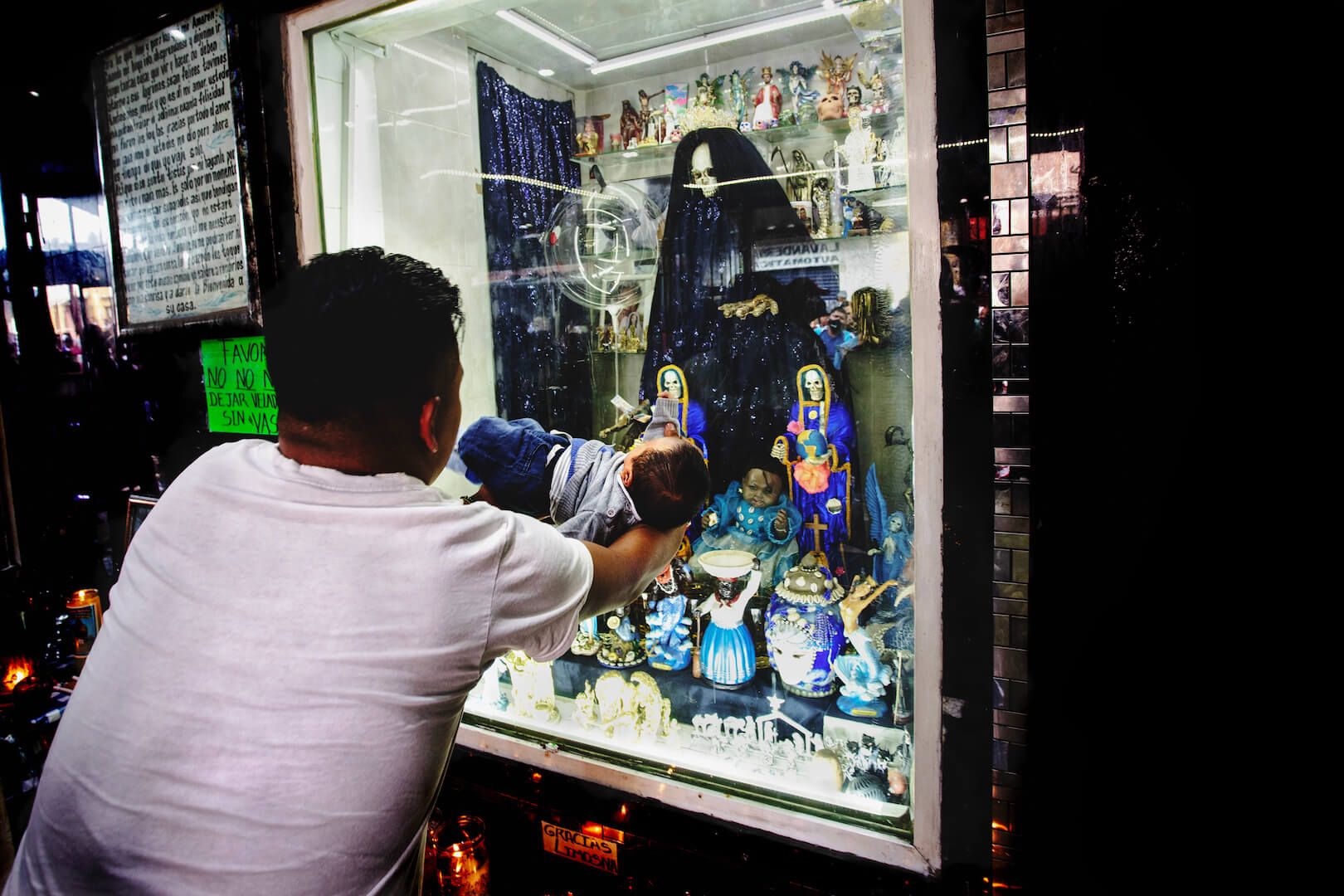
Of course, we didn't have helmets. We crossed a three-lane road in oncoming traffic, once nearly clipped by two cars between us, once knocked down by a bus we were driving into, but my seventeen-year-old chauffeur picked it off with the grace of a figure skater with the confidence befitting a gang boss. Perhaps Santa Muerte himself was already watching over us then, securing the other end of the elastic rope from the edge of the abyss.
We passed along the pavement between the flats of a poor housing estate, at the end of which I could see no continuation of the road, and I was horrified that this was the moment when a ride becomes a kidnapping. That we passed a bored policewoman among the half-decayed houses did not comfort me; rather, her servile dodging of the pavement reassured me that this place was not under the sway of ordinary authority. The dead end turned out to be a wise shortcut, though, and we found ourselves in the people-strewn shoulder of another road.
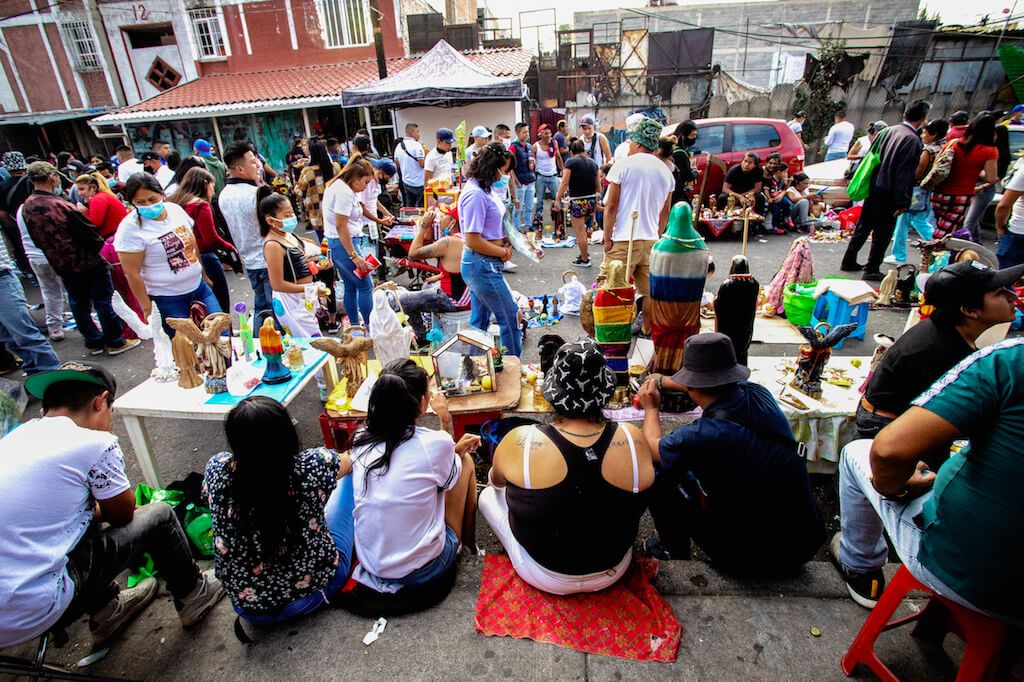
The air was saturated with the smell of joints, people were squishing into each other, even though the coronavirus pandemic was just peaking, with Mexico losing out in the international comparison, and the crematoriums were not up to their job. Masks were not worn here, not appropriate for gangsters, and I was ordered to remove my mask so that my face would be visible.
But where else should I feel safer than here, in the immediate presence of the most emblematic altar of Santa Muerte, who protects everyone without any distinction - since everyone is entitled to death - and is therefore the patron saint of criminals and gangsters, because the saint in the form of a grim reaper dressed in a splendid dress does not judge, and so she also watches over all those stray souls who have gathered here and who have tattooed tears around their eyes and crosses. They have come here to bow down to her and to make offerings and gifts to guard them on their wild journeys through life.
The atmosphere was peaceful and the participants in the street mass in honor of St. Death were exceedingly friendly. I don't know if this was a credit to the personality of my guide, most likely it was, either way the level of friendliness towards me and my camera was shocking. In fact, I felt comfortable there. But I kept in mind the words of my fixer, "These people are like water. Sometimes calm, sometimes stormy. And you never know when they'll go from one to the other."
I took pictures at the altar and pictures of the procession in the street. After about a quarter of an hour, my guide asked me if that was enough, and I said yes, again suspecting that NO was not an item on the menu of answers. We got on the scooter and sped back to the safe house. Only now did I believe it wasn't a trap.
Back in the mysterious tent, folks were happily consuming what we had bought on arrival to justify our intrusion into this epic living room.
The queue didn't get any shorter even as evening approached, while the sunlight turned orange and threw shadows on the little square between the houses, where normal life was going on again - zombie teenagers enjoying contraband, an elderly man sitting speechless on a wheelchair nearby, someone's kids trying to sell sweets - I bought a grape drink from them, but it was like an ice cube, so I saved it for home. The kid with the walkie-talkie at the entrance gave me another popsicle.
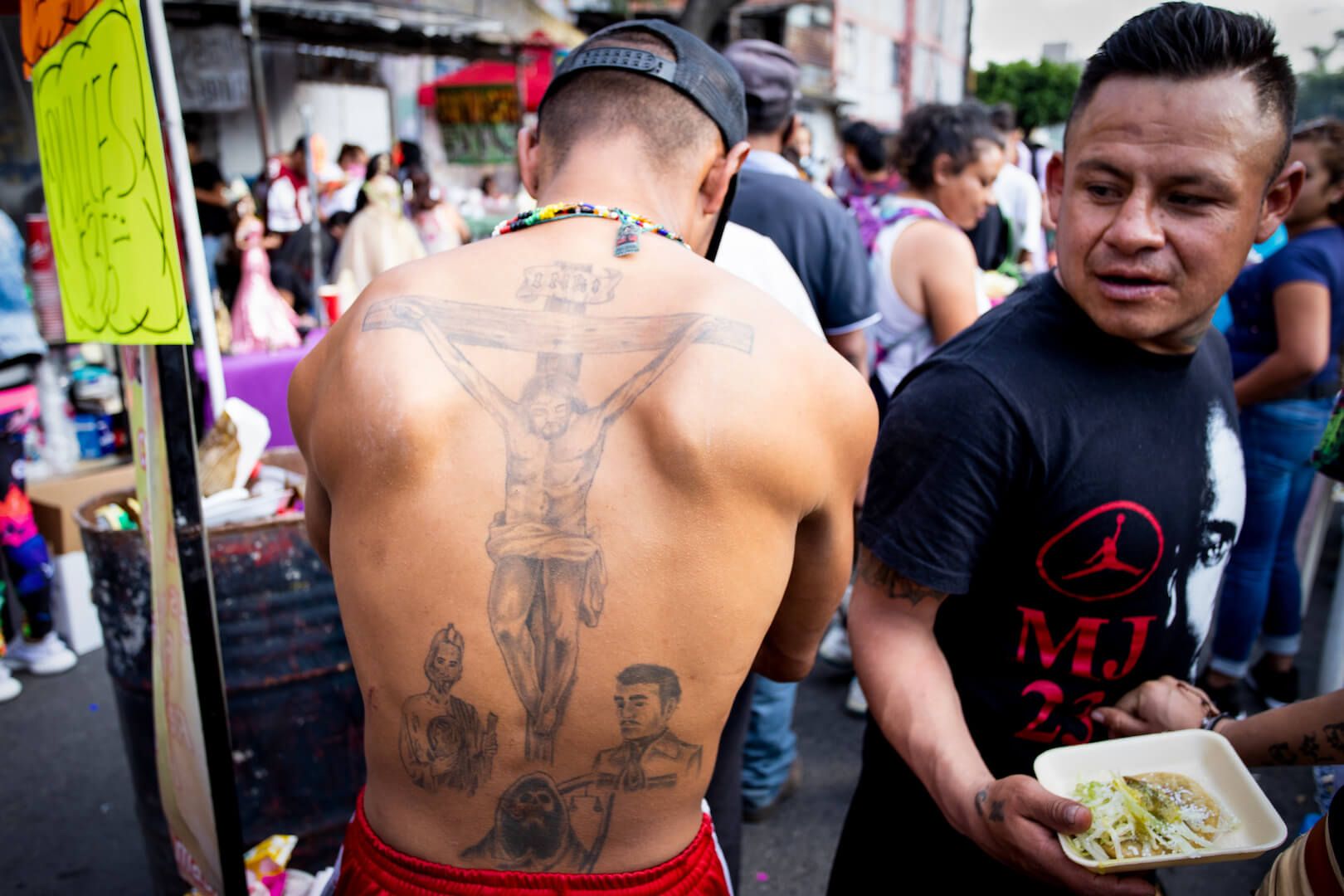
We saluted everyone as if we had become old friends in those few moments. A forearm shake - now fully anti-covid style and supervised by an educational poster on the door with instructions on how to protect yourself from covid, a few small talks, and I didn't want to leave.
In that moment and in that situation, it was a place where no one judged anyone, no one made differences, no one asked stupid questions, no one made arrogant or condescending remarks. Everyone here was equally damned in their own wild ways.
That was as far as I could see, and I was glad of it. I went to get my imaginary key chain back. Fortunately, it was waiting for me. Only sleep didn't come that night, and it didn't come for days.
